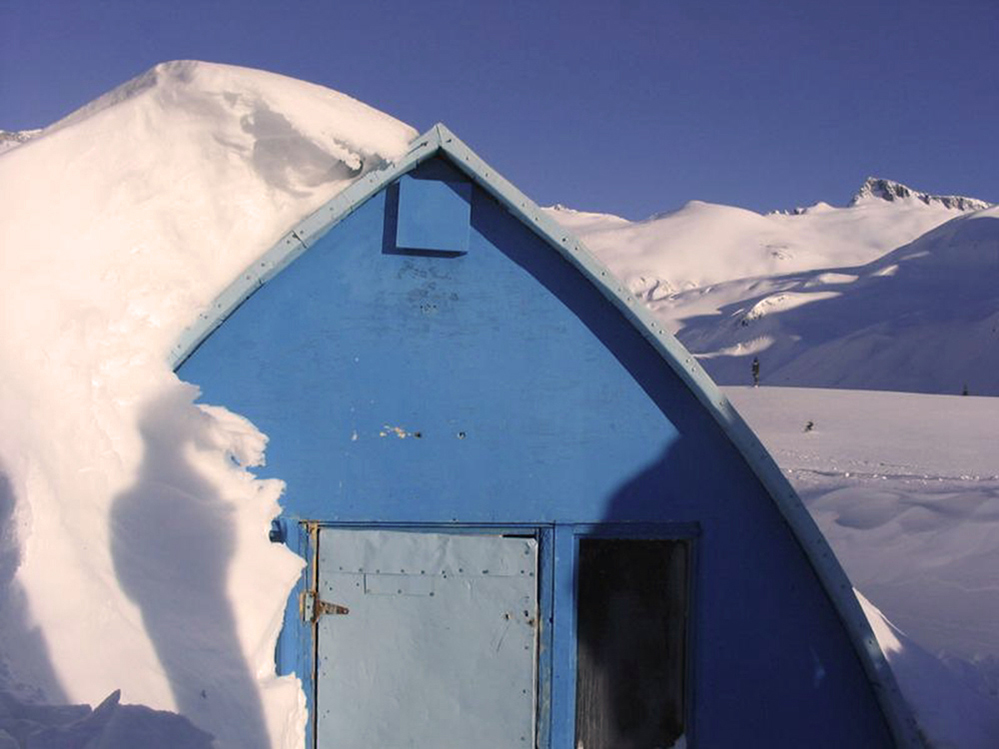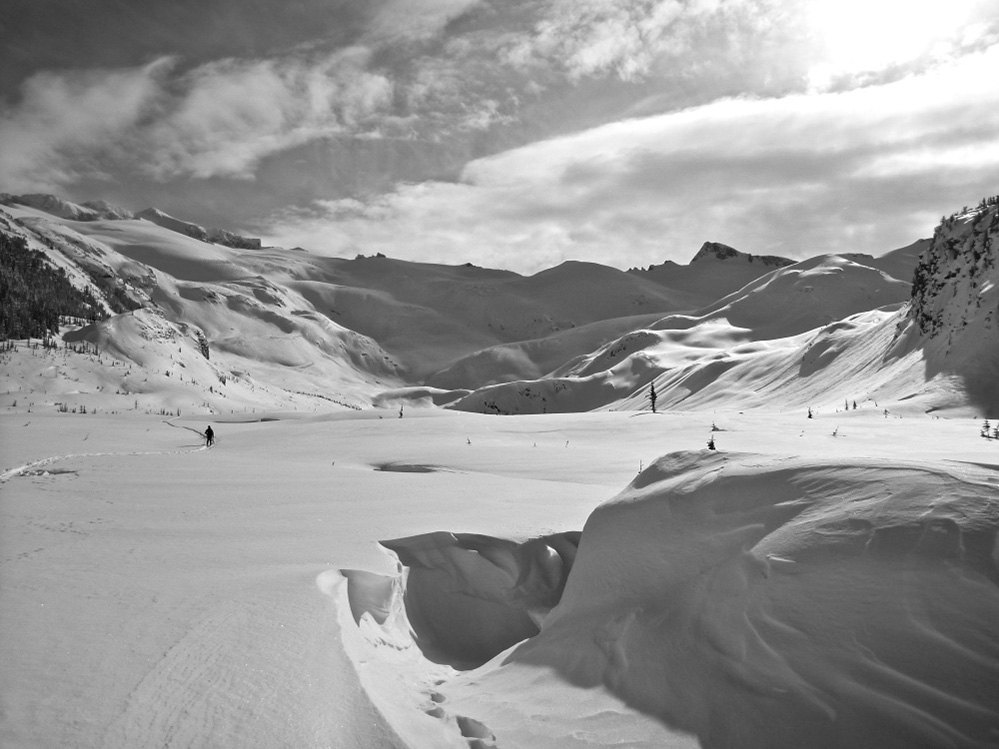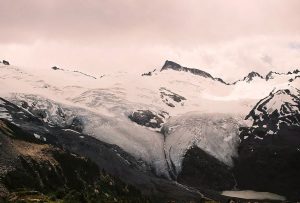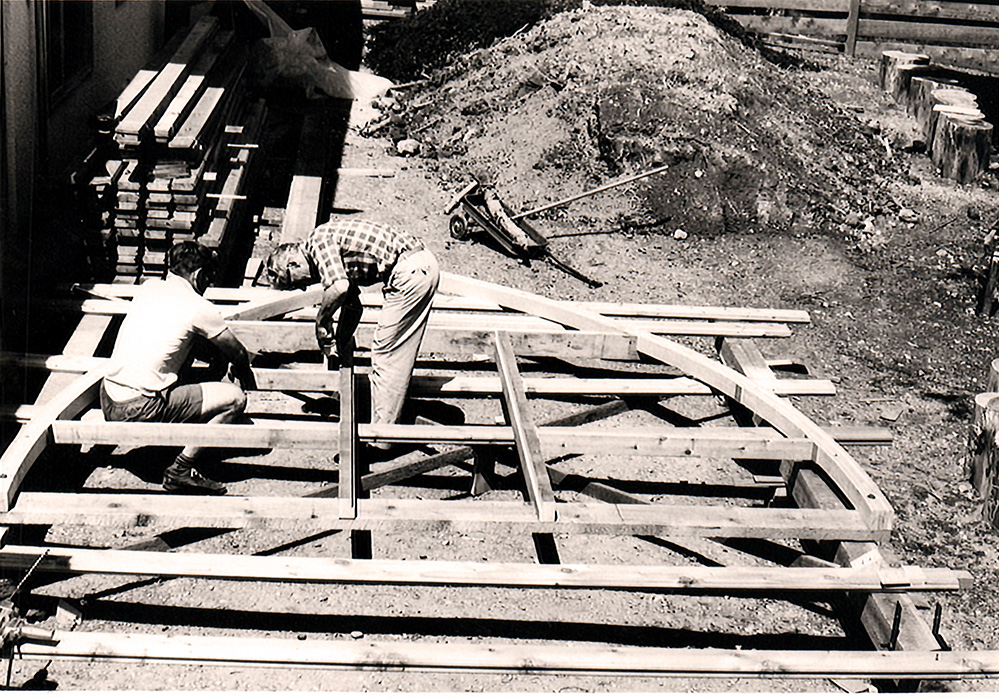5 – The Challenge of Building Alpine Huts
In the mid-1940s, the UBC-VOC started an annual tradition of a spring ski camp at the Sphinx Bay region of Garibaldi Lake, located in the heart of Garibaldi Provincial Park. This tradition endured for decades, and in 1969, after club members spent a night in the BCMC’s Himmelsbach Hut, they decided ‘we should build one of our own’.
In the spring of 1969, the UBC-VOC borrowed the laminating jig that Werner Himmelsbach designed to create the glulam arches. The club spent many lunch breaks and time between classes laminating arches in the basement of the Student Union Building.
Barry Narod recalled pre-assembling the hut on a concrete pad in front of the Student Union Building.
I was involved in laminating the arches, pre-assembly and construction of the Burton Hut and the Garibaldi Neve Hut.[8]
The new UBC-VOC hut was originally known as the Sphinx Hut. It was later renamed the Burton Hut after Roland Burton, who was instrumental in the planning and building of the hut.

The Sphinx (Burton) Hut was known as the ‘blue hell’ because it was hard to heat in winter even with the hut above its capacity of 8 people.
Much like the BCMC, the UBC-VOC had hoped to build another hut in Garibaldi Park so the club could traverse from hut to hut. The Garibaldi Neve was chosen because of its proximity to the Burton Hut; this location would enable the club to do multi-day expeditions within the Garibaldi region.
The Garibaldi Neve was a popular route and also due to the cost of flying in materials, a location was chosen without a lot of fore-planning or investigation.[9]

The Neve Hilton Hut completely buried in snow. Only a slight depression in the snow indicates the roof line of the Hut.
The hut stood for over two years until snow-creep and snow accumulation destroyed the hut. Snow-creep is the steady advancement of snow down a slope and can also be linked to the advancement of glaciers.
There is still debris up there, if you go up, you might find a toilet seat.[10]



